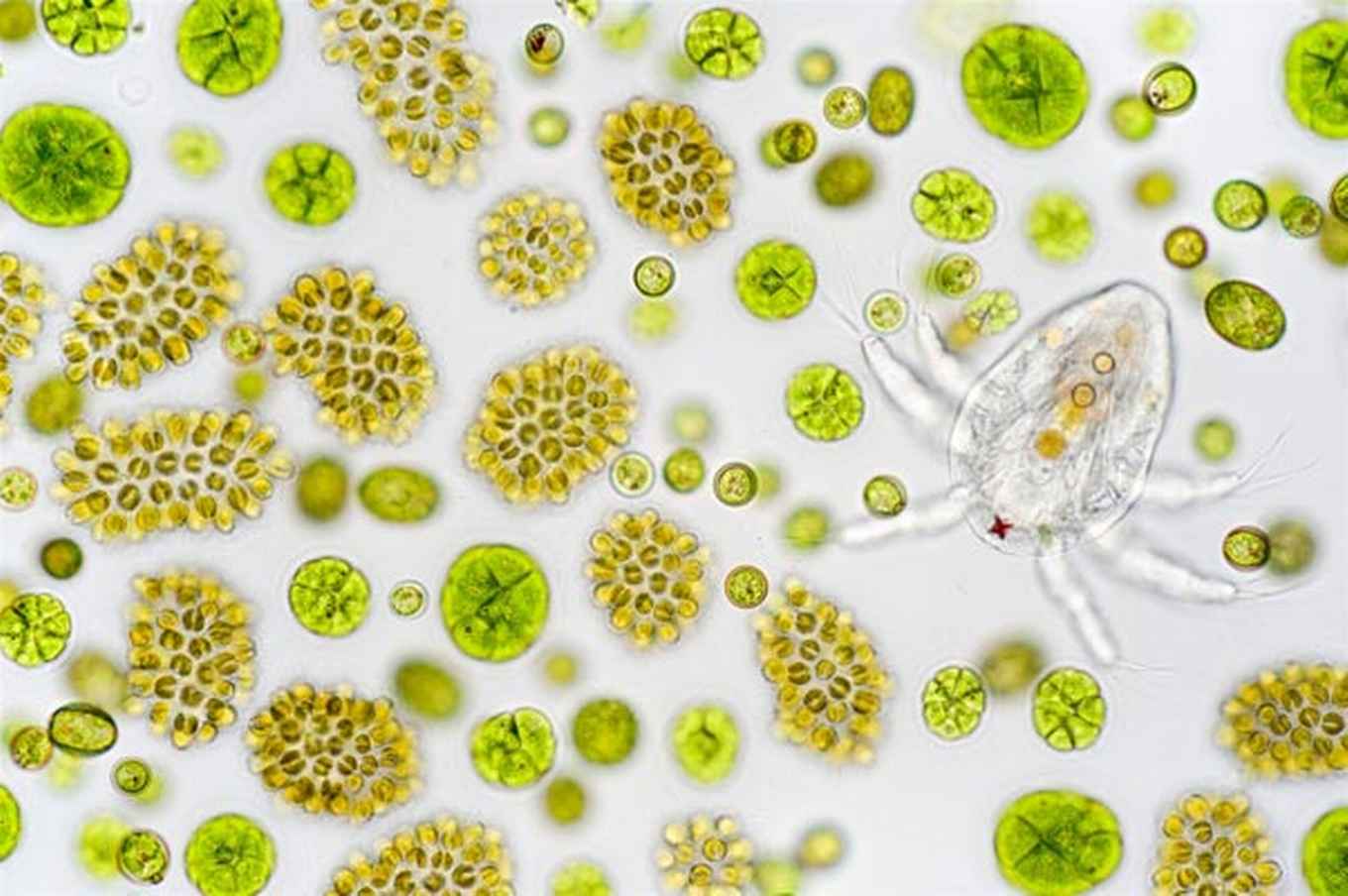IBED article in The American Naturalist: Why do phytoplankton evolve large size in response to grazing?
19 September 2019

Why do phytoplankton evolve large size in response to grazing? A new explanation based on selection for nutritious food.
Phytoplankton are among the tiniest organisms on Earth. Yet they display wide variation in size, from small species less than a micrometer to large species of almost a millimeter. Small phytoplankton species tend to be better competitors for nutrients, whereas large phytoplankton may be more difficult to handle for grazing zooplankton. Hence, the evolution of large phytoplankton is often explained as a physical defense against grazing. A major difficulty with this explanation, however, is that zooplankton may counter this escape from grazing by coevolving to a large size as well. So why do phytoplankton evolve large size in response to grazing?
In their article Pedro Branco, Martijn Egas, Spencer Hall and Jef Huisman propose a new explanation. They argue that a major evolutionary advantage for large phytoplankton is their low nutritional quality. To investigate this hypothesis, the authors develop a mathematical model in which the individual sizes of phytoplankton and zooplankton coevolve. The model makes two key assumptions supported by observational studies. First, the nutrient content of phytoplankton cells varies allometrically with cell size, such that large phytoplankton cells contain less nutrient per unit cell volume than small phytoplankton cells. Second, zooplankton can graze selectively, with a preference for nutritious food. Combining these two assumptions, the model predicts that selective grazing on small but nutritious food will favor evolution of large phytoplankton of low nutritional quality. Hence, a size-dependent change in food quality may explain why phytoplankton of large size often dominate in waters with high grazing pressure.
Publication details:
“Why do phytoplankton evolve large size in response to grazing?”, Pedro Branco, Martijn Egas, Spencer R. Hall, Jef Huisman.